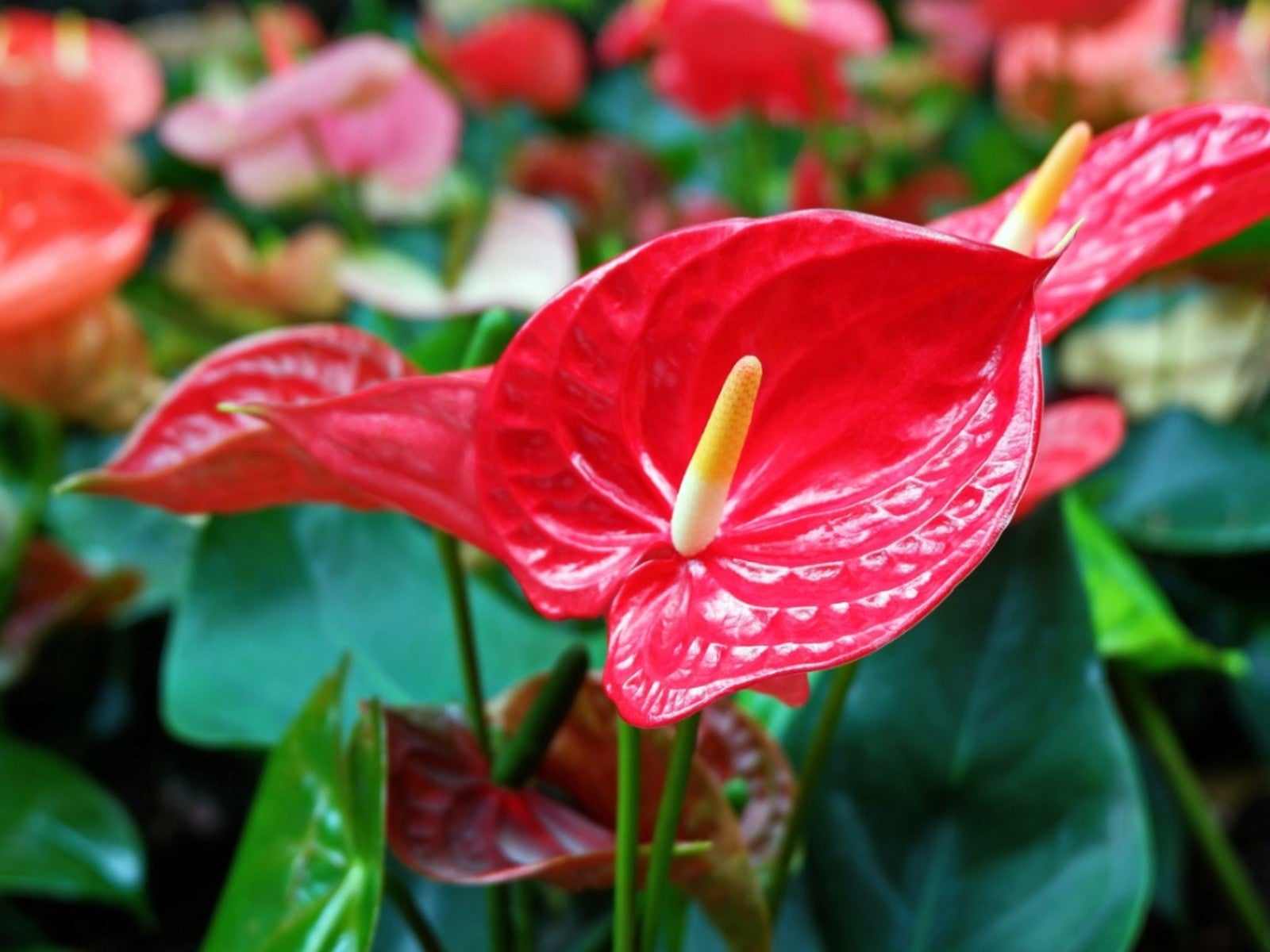Can I Grow Anthurium In Water - Anthurium In Water Care Tips


There are nearly 1000 species of Anthurium plants. All of these are native to places with hot, tropical weather. Most produce colorful waxy bracts and shiny leaves. You can often find them for sale glued to a piece of volcanic rock or pumice. This is soaked in water and wicks moisture up to the leaves. This would lead you to question, "Can I grow Anthurium in water?"
You've probably tried rooting a cutting in water but have you tried to grow an entire plant in just water? Anthurium plants like warm, moist conditions, so it would seem possible to grow them in water. The difference between an Anthurium in water vs. soil is the care. An Anthurium in water only will need supplemental feeding more frequently. Learn how to grow Anthurium in water for an eye catching display of the plant and its roots.
Can I Grow Anthurium in Water?
An Anthurium in water only, in a clear vase, makes an astounding display. But keep in mind, the plant is not getting nutrients that it would normally harvest from the soil. Minerals are missing in most tap water, so use mineral water to give the plant some of these essential materials. An Anthurium in water vs. soil could eventually rot if slimy water is left in the glass.
Consider hydroponics where plants are grown in water. They get generous nutrient solutions, controlled temperatures, and usually moving water to enhance oxygen absorption to the roots. An Anthurium sitting in just water, will eventually suffer, if you don't provide all these conditions.
How to Grow Anthurium in Water
It is very simple to start an Anthurium in water. Select a glass container so you can view the roots. A mason jar or clear vase will work nicely as long as it is large enough to contain the root mass. Remove your Anthurium from its soil and rinse off the roots gently in lukewarm water.
This will keep the container of water from getting muddy and cloudy. For best results, use room temperature water that has had time to off-gas, or use mineral water at room temperature. You will need just enough to cover the roots but not the stems. Place the plant in the container and enjoy.
Anthurium in Water Care
If you are not using mineral water, your tap water may form lime deposits on the container. Change the water frequently to help reduce this discoloration. Once per month, during a water change, add a few drops of houseplant food to the new water. Keep the container in indirect light, avoiding windows with the hottest rays. Anthuriums are very stoic plants and don't need much special care. Water changes, nutrients, heat, and proper lighting are all you need for an Anthurium in water care.
Sign up for the Gardening Know How newsletter today and receive a free copy of our e-book "How to Grow Delicious Tomatoes".

Bonnie Grant is a professional landscaper with a Certification in Urban Gardening. She has been gardening and writing for 15 years. A former professional chef, she has a passion for edible landscaping.